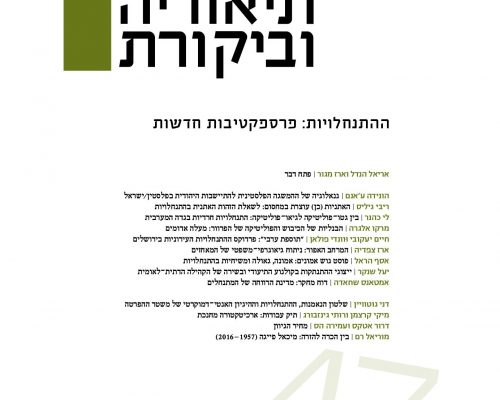בין גטו-פוליטיקה לגיאו-פוליטיקה: התנחלויות חרדיות בגדה המערבית
לי כהנר
ההתיישבות החרדית מעבר לקו הירוק מנתה בשנת 2013 למעלה מ-120,000 תושבים חרדים, שהם למעלה מ-30% מאוכלוסיית המתנחלים החיים כיום באזורי יהודה ושומרון ו-15% מכלל האוכלוסייה החרדית בישראל. היישובים החרדיים החדשים מעבר לקו הירוק אינם תולדה של אידיאולוגיה העוסקת בעתיד השטחים; תחת זאת, הם מספקים מענה לביקוש ההולך וגדל למרחב מגורים, בהתחשב במגבלות הייחודיות המקשות על הפרט החרדי להתחרות בשוק הדירות החופשי. המאמר יבקש לאתגר את החלוקה הדיכוטומית המקובלת בין "התנחלויות אידיאולוגיות" ל"התנחלויות של איכות חיים" ולברר אם בהקשר של ההתנחלויות החרדיות נוצר תחום ביניים הולך ומתרחב שבו ההוויה קובעת את התודעה – ובמקרה של מפעל ההתנחלויות מדובר בתודעה גיאו-פוליטית ימנית.
מחד גיסא ההתנחלות החרדית מספקת לתושביה מגורים בקהילות מתבדלות וסלקטיביות המאפשרות לנהל אורח חיים דתי-שמרני. מאידך גיסא היא מחייבת תהליך של יציאה הן מחומות הקהילות הוותיקות והריכוזים החרדיים בירושלים ובבני ברק והן מגבולות הקו הירוק; תנועה זו אינה עניין של מה בכך שהרי מדובר בחברה קהילתית, דתית וסגורה והמעבר להתנחלות נעשה ללא המוטיבציות האידיאולוגיות ה"חלוציות" שאפיינו תנועות התיישבות אחרות בהיסטוריה הישראלית. מנקודת מוצא זו יבחן המאמר את מידת החיבור – או אי-החיבור – בין ההתנחלות החרדית לסביבתה הספציפית, הן ברמה הפוליטית-אידיאולוגית והן ברמה האינסטרומנטלית היומיומית. ברמה המרחבית-חברתית יבחן המאמר את השפעת ההתנחלויות החרדיות על תהליכי היפתחות או היסגרות העוברים על החברה החרדית בישראל בכללותה, ויבדוק אם התנחלויות אלה מעכבות או מאיצות תהליכים קיימים ואולי אף מעצבות אותם.
הצורך של החרדים במגורים קהילתיים לצד אוכלוסייה דומה להם, במוסדות חינוך ודת ייחודיים ובמרחב משלהם – כל אלה הופכים את החברה החרדית לחברה טריטוריאלית מאוד באופייה. אבל האם, מנגד, מתאפיינת החברה החרדית גם בא-טריטוריאליות? במילים אחרות, האם אפשר ליישב את החברה החרדית בכל מקום בתנאי שמספקים לה תשתית מוסדית, קהילתית, דתית וחינוכית ודואגים לחיבור בין קהילותיה ויישוביה בעזרת רשת של תחבורה ציבורית ייעודית? האם רמת המיקרו של המיקום הספציפי חשובה פחות מגיאוגרפיית המקרו של המרחב, קרי מארג הקשרים בין היישובים החרדיים? הרעיון המרכזי במאמר מסמן אפוא את הבחירה בין "מיקום בקהילה" (טריטוריאלי) לבין "מקום הקהילה" (א-טריטוריאליות).


